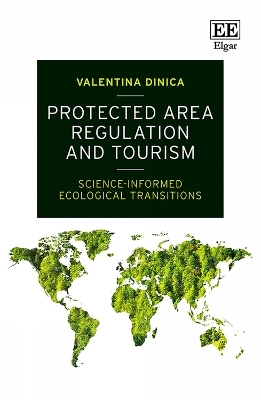
Protected Area Regulation and Tourism
Edward Elgar Publishing Ltd (Verlag)
978-1-83910-707-8 (ISBN)
This innovative book explores the evolution of ecology and how scientific advances enable the redesign of Protected Areas (PA), guided by area-specific ecological values and objectives. It argues that transitions towards science-informed integrated PA systems could contribute to safeguarding the persistence of biodiversity and socio-ecological systems.
Valentina Dinica proposes a conceptual framework to integrate the ecological and tourism aspects of PA regulation, assisting decision-makers to develop contextually effective regulatory instruments that avoid over-/under-regulating tourism, given the PA’s ecological profiles. The framework is applied to comparatively evaluate the ecological representativeness and regulations of PA networks in New Zealand, Tasmania and Hawaii. The empirical chapters also discuss gaps and (mis-)alignments between ecology and tourism regulations, displaying outdated scientific paradigms. The book proposes a new approach to classifying PAs, to better balance human–nature relationships.
This book will be of interest to students and academics in public policy, law, ecology, environmental studies, sustainability sciences, tourism studies, political science and history of science.
Valentina Dinica, PhD, Associate Professor in Public Policy and Sustainability, Victoria University of Wellington, New Zealand
Contents: PART I REGULATIONS AND SCIENCE FOR PROTECTED AREAS AND TOURISM 1. Ecological challenges and Protected Areas 1.1 Ecological pressures 1.2 Protected Areas – protected environment? 1.3 The book’s aim and conceptual framework 1.4 The structure of the book 2. Key concepts: frameworks, values, regulations and science 2.1 Frameworks as theoretical constructs 2.2 Eco-values and eco-objectives 2.3 Conceptualisations of regulations 2.4 Science: contested philosophies 3. Protected Areas before 1960 3.1 The era of natural history, reserves and hunting 3.2 The era of tourism, parks and early ecology 3.3 Summary and concluding reflections 4. Spectra for the ecological regulation of Protected Areas 4.1 Shifts in scientific paradigms: implications for Protected Areas’ design and management 4.2 A spectrum of ecological values for Protected Areas 4.3 Ecological objectives 4.4 Concluding reflections 5. Spectra for tourism regulations in Protected Areas 5.1 Tourism access principles 5.2 Concession allocation methods for tourism businesses 5.3 Environmental regulation strategies for Protected Area target groups 5.4 Types of concession contract designs 5.5 Conclusion 5.6 Appendix: brief critical reviews of frameworks for tourism management PART II CASE STUDIES AND INTEGRATED REFLECTIONS 6. New Zealand 6.1 Ecological challenges and Protected Areas 6.2 Ecological references and scientific paradigms in legal-policy frameworks 6.3 Tourism regulation in the Westland National Park 6.4 Conclusion 7. Tasmania, Australia 7.1 Ecological challenges and Protected Areas 7.2 Ecological references and scientific paradigms in legal-policy frameworks 7.3 Tourism regulations applicable to the Cradle Mountain Lake St Clair National Park 7.4 Concluding reflections 8. Hawaii, United States of America 8.1 Ecological challenges 8.2 The Protected Area system, ecological rationales and scientific paradigms 8.3 Tourism regulations in State Protected Areas 8.4 The ecological representativeness of Protected Areas and concluding reflections 9. Protected Areas in transition 9.1 Summary of key findings and integrated reflections 9.2 PA redesign in a changing climate 9.3 Alternatives to Protected Area designations 9.4 A research agenda References
| Erscheinungsdatum | 12.04.2022 |
|---|---|
| Verlagsort | Cheltenham |
| Sprache | englisch |
| Maße | 156 x 234 mm |
| Themenwelt | Naturwissenschaften ► Biologie ► Ökologie / Naturschutz |
| Wirtschaft | |
| ISBN-10 | 1-83910-707-3 / 1839107073 |
| ISBN-13 | 978-1-83910-707-8 / 9781839107078 |
| Zustand | Neuware |
| Haben Sie eine Frage zum Produkt? |
aus dem Bereich


